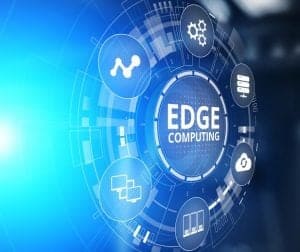
The most significant implication of using mobile edge computing seems to be a continued focus on efficient data processing and gaining timely insights.
Mobile edge computing (MEC) combines compute, connectivity, and low latency communications making it an attractive technology for many demanding applications. But can it live up to the hype?
Apparently yes. The global MEC market for software and APIs will reach $1.72 billion by 2026, and the market for MEC software in support of IoT applications will reach $546 million globally by 2026, according to a ResearchAndMarkets.com report.
MEC market drivers
Four core areas of improvement drive MEC adoption:
- Throughput: Lower wait times and stalls have far-reaching implications in any industry relying on video
- Congestion: MEC enables higher data volume by offering an alternative to cellular networks.
- Latency: 5G builds network strength and facilitates processing heavy applications like haptic communications, 4K streaming, and real-time remote control.
- Backhaul: With increased 5G processing demands, computing at the edge reduces backhaul.
Along with these drivers, edge computing allows organizations to better determine context. With the increased use of localized data, companies have better data usage and can make decisions with true customer value in mind.
In fact, more efficient processing enables the next generation of real-time data. Companies must grapple with moving data because data at rest cannot provide real-time insights. However, the company can decide which data will be stored and which will process in real-time.
Watch Now: Dell Technologies Edge Solutions (Video)Deployment considerations
The biggest potential verticals are auto, manufacturing, telecom, and healthcare. Across all verticals, there are so many possibilities for deployment.
Organizations can’t consider computing and communications separately any longer, thanks to multi-access edge computing. MEC can be deployed in many locations – think LTE and/or 5G macro base station sites. Other potential co-locations:
- Base stations
- Transmission nodes
- Network aggregation points
- Core network functions
Carriers will most likely provide a minimal network-as-a-service, but many enterprises will manage their own apps while allowing some access for third-party provisioning and administration. Some companies envision a more distributed approach, and others predict enterprise deployment alongside private LTE and 5G deployments.
Communication Service Providers may not be used to planning for remote servers, but they won’t have much choice because mobile edge computing adoption requires many more remote centers. As cellular networks expand to become video networks, bandwidth will increase.
CSP must consider this need as data movement gets faster and video demand builds. The report notes far-reaching implications, including an increase in locally consumed content and applications or real-time access to radio-network information.
The most significant implication seems to be a continued focus on efficient data processing at the edge, bringing companies of all sizes one step closer to the edge computing network of their dreams (and their greatest needs).







